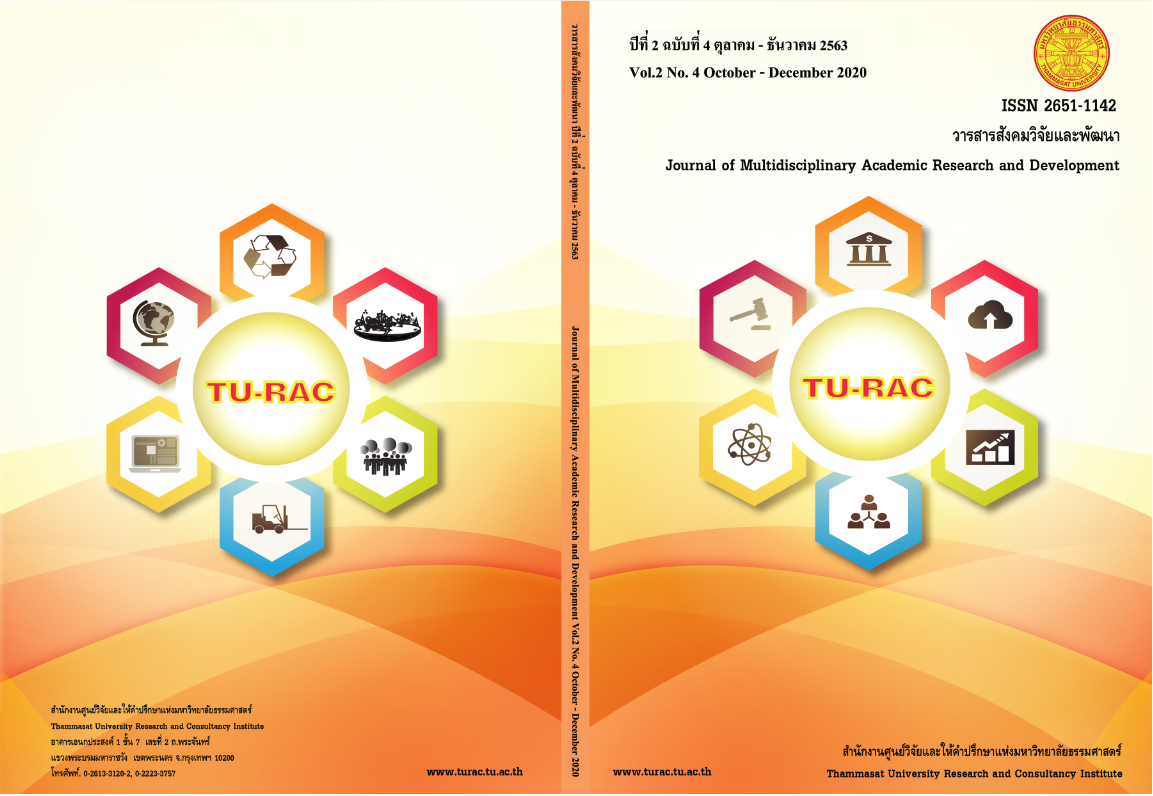Promotion Strategy For Community Based Tourism
Keywords:
Promotion strategy, Community-based tourismAbstract
Community tourism marketing promotion is an instrument to help make community tourism more attractive to tourists. Especially in the era of Thailand 4.0, where information is quickly communicated and social media is instrumental in product and service purchase decision-making. Marketing promotion combines both these elements with five approaches: advertising; sales; promotion by vendors; distributing news and public relations; and direct marketing. Marketing promotion, generally seen as essential in helping develop community tourism, has the key goal of encouraging tourists to produce positive perceptions and travel decision-making. In this sense, effective marketing promotion defines tourism activities to meet cultural heritage tourist category demands as well as fulfilling tourist expectations, beyond merely interesting tourists in destinations.
Marketing promotion and community tourism include developing official products. Tourism associates community uniqueness through tourism activity development through reasonably priced services, advertising and public relations. Different communication channels are used to contact target customers, including stimulating tourism to a range of festivals by offering promotions, including tourism discounts Mother's Day, and Songkran Festival room rental opportunities. Personnel should be trained to provide knowledgeable regional tourism services with community history expertise, friendliness, and hospitality. Service-mindedness, making sites visit-ready, and physical preparedness boost tourist confidence and assurance about safety during travel. A convenient infrastructure ensures that the overall tourism service process is clear, simple, easy to understand, and convenient for obtaining tourism services. Community tourism can be successful and sustainable through marketing promotion instruments that differ from general product promotion. Lifestyles, local wisdom, and community roots should be emphasized in media to heighten tourist and audience interest, motivating visits to exchange knowledge. It should also underline preservation of original local conditions as much as possible, from natural environment to societal living conditions, so that community tourism development remains sustainable in future. Marketing promotion may be required for entrance to a community tourist attraction, as well as branding to develop in target customers and others a sense of loyalty, repeat purchase, and sense of belonging, as they eventually become voices for community tourism.
References
งานองค์ความรู้ สำนักบริหารยุทธศาสตร์ ร่วมกับสำนักท่องเที่ยวโดยชุมชนองค์การบริหารการพัฒนาพื้นที่พิเศษเพื่อการท่องเที่ยวอย่างยั่งยืน (องค์การมหาชน). (2558). ใส่ใจไปเที่ยวกับ อพท. สืบค้นเมื่อวันที่ 28 ธันวาคม 2563, จาก https://tis.dasta.or.th/dastaknowledge/wp-content/uploads/2018/02/1-Community-Based-Tourism.pdf.
ณัฏฐพัชร มณีโรจน์. (2560). การจัดการการท่องเที่ยวโดยชุมชน. วารสารวิชาการการท่องเที่ยวไทยนานาชาติ.13(2), 25-46.
ดรรชนี เอมพันธุ์. (2550). การพัฒนาการท่องเที่ยวโดยชุมชนและการจัดกิจกรรมโฮมสเตย์. กรุงเทพฯ: สำนักพิมพ์มหาวิทยาลัยเกษตรศาสตร์.
เทิดชาย ช่วยบำรุง. (2552). บทบาทขององค์กรปกครองส่วนท้องถิ่นกับการพัฒนาการท่องเที่ยวอย่างยั่งยืนบนฐานแนวคิดเศรษฐกิจพอเพียง. กรุงเทพฯ: สำนักพิมพ์คณะรัฐมนตรีและราชกิจจานุเบกษา.
พจนา สวนศรี และสมภพ ยี่จอหอ. (2556). คู่มือมาตรฐานการท่องเที่ยวโดยชุมชน. เชียงใหม่: มหาวิทยาลัย พายัพ, สถาบันการท่องเที่ยวโดยชุมชน.
มนรัตน์ ใจเอื้อ. (2559). รูปแบบการตลาดเพื่อพัฒนาการท่องเที่ยวเชิงมรดกวัฒนธรรม:ชุมชนบางหลวง ตำบลบางหลวง อำเภอบางเลน จังหวัดนครปฐม. วารสารวิชาการศรีปทุมชลบุรี. 12(3). 12-24.
วีระพล ทองมา และประเจต อำนาจ. (2547). ผลที่เกิดขึ้นจากการจัดกิจกรรมการท่องเที่ยวต่อประชาชนในพื้นที่ตำบนแม่แรม อำเภอแม่ริม จังหวัดเชียงใหม่. เชียงใหม่. รายงานผลการวิจัย มหาวิทยาลัยแม่โจ้.
วีระพล ทองมา. (2559). การท่องเที่ยวโดยชุมชน (Community Based Tourism :CBT) สำหรับการพัฒนาคุณภาพชีวิตของชุมชนในเขตที่ดินป่าไม้. สืบค้นเมื่อวันที่ 15 ตุลาคม 2561, จากwww.dnp.go.th/fca16/file/i49xy4ghqzsh3j1.
สินธุ์ สโรบล. (2559). การท่องเที่ยวโดยชุมชนแนวคิดประสบการณ์จากภาคเหนือ. กรุงเทพฯ: โครงการประสานงานวิจัย และพัฒนาเครือข่ายการท่องเที่ยวโดยชุมชน สำนักงานกองทุนสนับสนุนการวิจัย (สกว.).
สุดถนอม ตันเจริญ. (2559). การจัดการการท่องเที่ยวโดยชุมชนกับการพัฒนาการท่องเที่ยวอย่างยั่งยืนของชุมชนบางขันแตก จังหวัดสมุทรสงคราม. วารสารวิชาการการท่องเที่ยวไทยนานาชาติ. 13(2). 1-24
องอาจ ปทะวานิช. (2550). การโฆษณาและกลยุทธ์การส่งเสริมการขาย. กรุงเทพฯ: แสงดาว
Kotler, P., Bowen, J., & Makens, J. (2003). Marketing for hospitality and tourism. Upper Saddle River, NJ: Pearson Education.
Kotler, Philip. (2007). A framework for marketing management. Upper Saddle River, N.J.: Prentice Hall.
Misiura, S. (2006). Heritage marketing. Oxford, UK: Butterworth-Heinemann.



